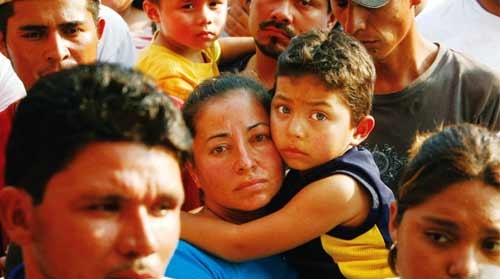A trend toward anti-immigrant, anti-choice laws

By Elena Shore, New America Media
2011 saw a record number of laws restricting abortion in U.S. states. It also saw a record number of state anti-immigrant laws. Coincidence?
Maybe not.
In 2011, U.S. states enacted 135 new reproductive health provisions, 92 of them seeking to restrict abortion.
In 2000, 13 states were considered "hostile" to reproductive rights; by 2011, that number had doubled to 26 states, according to the Guttmacher Institute. Last year, more than half of women of reproductive age (15-44) were living in states that were hostile to abortion, up from less than one-third in 2000.
This map shows the trend toward restricting reproductive rights, primarily in the Midwest and the South. Of the 13 states in the South, half were considered hostile to reproductive rights in 2000; all had become hostile by 2011.
But 2011 was also a record year for anti-immigrant legislation. Five states (Alabama, Georgia, Indiana, South Carolina, and Utah) passed anti-immigrant bills modeled after Arizona's 2010 law, SB 1070. An analysis by Mother Jones found that 164 anti-immigration laws were passed by state legislatures in 2010 and 2011. The map can be viewed here.
It turns out these maps look strikingly similar.
Here's a look at five states where anti-immigrant and anti-choice efforts converge:
1. Alabama -- In 2011, Alabama passed HB 56, considered to be the nation's strictest state immigration law. It also enacted legislation banning abortion at 20 weeks from fertilization.
2. Indiana -- In 2011, Indiana enacted an anti-immigrant law modeled after Arizona's SB 1070. A federal judge blocked part of the law last summer, shortly before it was set to take effect. Indiana enacted legislation banning abortion at 20 weeks from fertilization.
3. Georgia is about to become the sixth state to ban abortion at 20 weeks from fertilization, with no exemptions for rape or incest. The Georgia House and Senate passed the bill, and it's now on its way to Republican Gov. Nathan Deal, who is expected to sign it into law. Last year, Deal signed into law another controversial bill in Georgia -- the state's Arizona-inspired anti-immigrant law HB 87.
4. Arizona -- the first state to pass an anti-immigrant state law, SB 1070, making it illegal to be an undocumented immigrant in the state -- is now cracking down on reproductive rights. The Arizona state Senate passed a 20-week abortion restriction, which is now heading to the House. In 2011, Arizona required doctors to be in the same room as the patient when prescribing medication abortion. It also moved to require that a woman obtain an ultrasound prior to having an abortion. Last month, the Arizona Senate narrowly defeated a bill that would have allowed employers to drop health insurance coverage for birth control.
On April 25, the U.S. Supreme Court will hear arguments over Arizona's immigration law. Gov. Jan Brewer is challenging a ruling by a federal judge that blocked parts of the state law, and she is taking the case to the Supreme Court in a decision that is expected to have a ripple effect on the other five Arizona-style state laws. (A federal court in Atlanta announced they wouldn't even rule on challenges to the Alabama and Georgia laws until they heard the Supreme Court ruling on Arizona's SB 1070.)
5. Mississippi almost passed an anti-immigrant state law, which was derailed in 2011, thanks in part to the actions of African-American legislators. Another Arizona-style anti-immigrant bill died in the state Senate this week. In 2011, Mississippi voters defeated an initiative that would have restricted women's access to both abortion and contraception by defining the term "person" under the state constitution as "every human being from the moment of fertilization."
What do these states have in common? They reflect a shift in demographics. Although they don't have the largest immigrant populations in the country -- in fact, far from it -- these states have experienced the biggest percentage increase in new immigrants.
That's because immigrants are increasingly settling outside of the traditional destinations of California, Texas, Florida, New York, New Jersey, Massachusetts and Illinois. They are moving instead to the "new destination" states in the South and central United States: North Carolina, Georgia, Arkansas, Tennessee, Nevada, South Carolina, Kentucky, Nebraska, Alabama and Utah.
In the 2000s, the immigrant population in those states grew by about twice the national rate.
And when it comes to growth in the Latino population, it's worth noting that the two states that saw the biggest increase in Latinos enacted two of the strictest immigration laws in the country. Alabama saw a 145-percent increase in its Latino population between 2000 and 2010, the second-highest Latino growth rate in the nation, after South Carolina.
Now, as the election approaches, voters could get a chance to vote out legislators who passed these laws. Except that these are also the same states that passed new rules at the voting booths that will make it harder for minority voters to cast their ballots in November.
